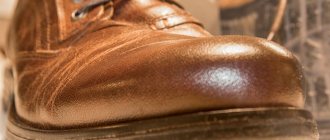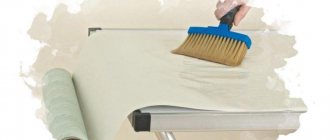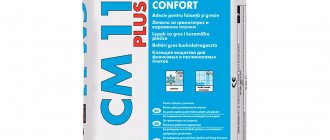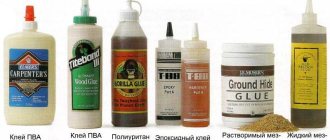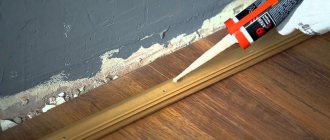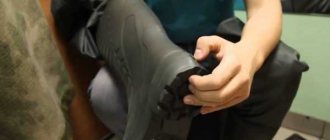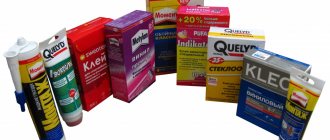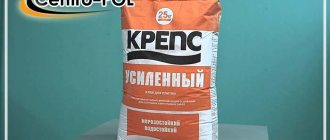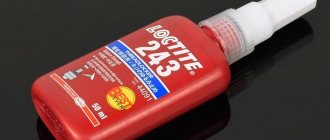Deformation and damage to shoes is a common occurrence. This may be due to both natural “wear and tear” and unfavorable weather conditions (snow, rain, temperature changes). Often, it is the sole that suffers. It peels off, causing the seal to be lost. However, before you run to the store for a new pair, you can try to fix the defect yourself at home. A special glue comes to the rescue.
Photo: Pixabay.com
The qualitative composition of such products should have a number of characteristics.
Among the main ones:
- Durable grip.
- No deformation of shoes at the joints.
- Long lasting effect.
- Elasticity of seams.
- Resistant to moisture and frost.
To begin with, it is worth noting that shoe adhesives, depending on the basis of the formula, are conventionally divided into the following types:
- Rubber.
Its purpose is auxiliary work. For example, using such means you can connect parts of textiles, insoles, and other elements. Here it is worth considering poor resistance to moisture and low temperatures. Therefore, rubber glue is only good for summer open shoes. - Polychloroprene.
It is used to “adhere” rubber soles, felt and leather insoles. It is resistant to moisture and frost. The only downside is that it is not suitable for polyurethane. - Polyvinyl chloride
- based on adhesive resins. Good for seams and toes. - Polyurethane.
It is considered very durable, fixed “tightly”. However, it is worth considering that the volume will increase after complete drying. Ideal for gluing soles to textiles or leather. It is important to be careful when working, because residues of the composition are difficult to remove from the surface. - “Instant”,
or - universal. Suitable for minor repairs. It has a convenient release form, and even a beginner can handle it.
As a rule, all packages of specialized glue are marked “For shoes.”
We present the rating of shoe adhesives 2022. The best 11 products that were selected by our experts based on user reviews and ratings.
| Rating (2021) | Prices, ₽ | A country |
| 1. UHU Schuh & Leder | from 260₽ | Germany |
| 2. Super Moment | from 130₽ | Ireland |
| 3. Kalina M Kleyberg | from 300₽ | Russia |
| 4. Henkel drop | from 400₽ | Russia |
| 5. Contact Packaging of super glue “Contact” | from 660₽ | Russia |
| 6. Moment Marathon | from 120₽ | Russia |
| 7. Anles nairite | from 170₽ | Russia |
| 8. Second 403-109 | from 70₽ | China |
| 9. Polytech Instrument 88 | from 80₽ | China |
| 10.Strength SSBL1-15 | from 40₽ | China |
| 11. Novbytkhim Sprut | from 40₽ | Russia |
Which glue is better not to use?
It’s not enough to know how to glue the sole correctly; you need to be sure that the layers are fastened securely. Some adhesives are not initially suitable for repairing shoes. Here is their list:
- PVA is the most useless compound for repairing shoes. Firstly, it does not hold surfaces together, and secondly, it loses strength upon contact with water;
- superglues - almost all quick-drying compounds are not used in repairing shoe soles. They can hold the leather upper and rubber sole together, but don't provide the flexibility you need. Options such as “Moment” and “Second” are not advisable to use in home repairs. The exception is special quick-drying adhesives marked “for shoes”;
- glue for ceiling tiles - this composition is characterized by high bond strength and is quite capable of gluing the sole to the shoe. But it leaves marks that are difficult to remove.
To know what glue to use to glue a delaminated shoe sole, you need to know its composition. The sole of a polyurethane shoe will not be taken on by glue based on polychloroprene rubber. And shoes with a flexible base should not be glued with compounds that provide rigid adhesion.
How to seal a sole with voids
When the sole layer is smooth and dense, it is easier to repair. Some types of shoes have hollow bottoms. This allows you to lighten the pair and make it comfortable to wear, but repairing damaged shoes with voids is more difficult. How to glue the sole in this case? The voids will have to be filled, otherwise reliable adhesion will not be achieved. It is necessary not only to bend the bottom, but also to remove the insole.
The voids are filled with porous rubber or other material suitable in structure. Then the voids with filler are treated with sealant, removing small cracks. Next, the sole needs to be sealed. This is done after the sealant has completely hardened.
How to glue the sole after filling the voids? The procedure will be the same as with other shoes - stripping, degreasing, sizing. The load should not be selected too heavy so as not to push through the filled voids. It is important to keep your shoes for the right amount of time. The entire repair, including sealing and gluing, can take from 3 to 5 days.
Sneaker repair
For repairing sports shoes, it is better to use epoxy glue. You can also find a special Seamgrip product. It is intended for the repair of sports shoes. Before repairing, shoes should be thoroughly cleaned. This also applies to the sole. In order for the glue to better adhere to the surface, the part of the sole where the glue will be should be carefully treated with fine-grained sandpaper or a needle file. After cleaning and sanding, for better gluing, the surface should be treated with alcohol-containing solutions. Solvents or acetone will also work.
If the hole is quite large, then before gluing it is better to fill it with a fiberglass mesh. You can buy it at construction stores. Next, glue is applied according to the instructions. Often this is a layer no more than 3 mm thick. Then the glue is left for several minutes for better adhesion on surfaces that have not yet been glued to each other. This forms a thin film on the glue, which helps to better adhere to two different surfaces.
Afterwards, you need to carefully press on the glued area and leave it in this position for at least a day. To do this, you can use cleats or a similar structure. After all the manipulations, you can wear your shoes again. But this method is not suitable for all types of sneakers. If the sole of a sports shoe is made of polyurethane, then a cotton pad should be inserted between the sole and the fabric part of the sneaker. This will help to glue the surfaces more thoroughly. This way, you can repair your sneakers yourself.
